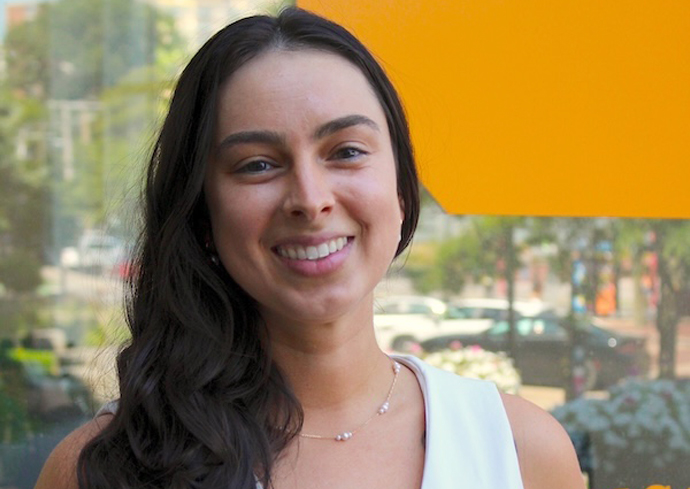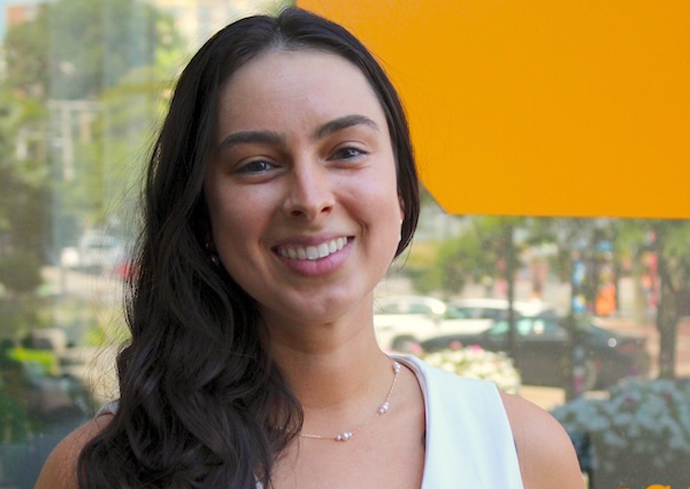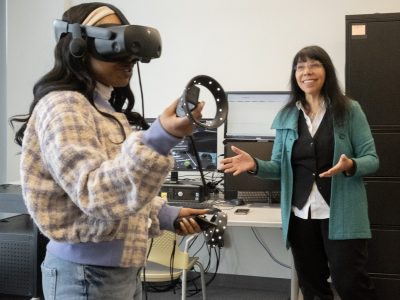‘It’s a Hard Call’: Professor Sabrina Butler Discusses Process Addictions, Smartphones and School Bans
Across the United States, school administrators, parents, and students—as well as public health officials, attorneys, and teachers unions—are debating whether or not to limit or even ban the use of smartphones and similar devices in schools “from the first to the last bell.”
It’s a thorny issue, raising questions of students’ and parents’ rights, school safety, academic performance—and mental health.
A scan of recent news stories offers a snapshot of various positions: banning devices is good for “academic learning and social development,” it could mitigate mental health and other harms, and even help wean teens off social media. On the other hand, smartphones help parents stay in touch in an emergency and, sometimes, they are required tech for instruction or even for monitoring health.
One scholar addressing the potential harms caused by overuse of smartphones—in and out of school—is Sabrina Butler ’15, G’18, assistant teaching professor of Counseling and Counselor Education in the Syracuse University School of Education.
One of Butler’s research and clinical interests is process addictions in children and adolescents, a topic closely related to the smartphone question. Given the groundswell of concern —not to mention high-profile lawsuits for Meta and TikTok—about young people’s online habits, the School of Education asked Butler about the connection between process addictions, phones, apps, and mental health—and what, if anything, schools can do.
As a mental health counselor, how does your clinical work and scholarship frame how you view the controversy surrounding smartphone bans in schools?
My interest centers around the overuse of smartphones and other devices by children that can develop into what mental health professionals refer to as a “process addiction.” We become concerned when we see extensive attachment to the phone, including high rates of texting; addiction to online games, such as “Roblox,” or “Call of Duty”; and dependency on social media apps, such as Instagram, Snapchat and TikTok.
In general, we can say that gaming addiction affects boys more, leading to issues of quality of sleep and academic performance, while for girls social media addiction is more of an issue, leading to self-esteem, body image and other mental health challenges.
The data bears out these concerns. Eighty-five percent of US teens say they play video games, while children 8 to 17 years of age spend an average of one and a half to two hours daily playing online. Statistics reveal that 8.5% of children and teenagers younger than 18 have some kind of gaming disorder.
Meanwhile, more than half of teens associate the absence of their phone with at least one of three emotions: loneliness, being upset, or feeling anxious. Girls are more likely than boys to feel anxious or lonely without their phones. Interestingly, some unease is self-reported: 54% of US teens aged 13 to 17 say they spend too much time on their phones.

How is a “process addiction” related to other kinds of addiction?
Process addictions are those compulsive behaviors where no chemical or other addictive substance is used. In addition to smartphone use, other examples include addiction to gambling, shopping, eating, self-harm, sex, and exercise.
Understanding and researching process addictions is hampered by the fact that the “Diagnostic and Statistical Manual of Mental Disorders” only recognizes a couple of these examples: gambling and sex addictions.
But process addictions can re-wire the brain much the same way as chemical addictions do. That is, the brain learns to reward pleasurable behaviors (such as checking the “likes” of a social post) and cravings can set in—the need to constantly look at the phone.
Nevertheless, this field is developing, and there are more studies underway, as well as more statistics from national surveys to reference.
What is the nature of your work around process addictions, both clinically and in your research and teaching?
I do a lot of work with children and process addiction in my clinical practice, and as a teacher of counselors, I help school and other counselors in training understand the signs of addiction, how to assess it and how to treat it.
In my research, I am interested in using large data sets to understand the scope of process addictions in young people in order to inform screening tools, treatments and counselor education.
What are some of the negative consequences of smartphone addiction that educators are dealing with?
There are a few. Overuse of smartphones can take away from the educational process because students’ focus is taken up by social media, texting and games. It can cause poor sleeping habits, with students catching up in the classroom or becoming increasingly absent from school. Sleep also can be disrupted by doomscrolling, especially about subjects that cause anxiety, and even the blue light of the screen.
Then there are behavioral concerns. Overuse can affect young people’s social skills and interactions, with some finding difficulty making friends in real life or cultivating false friendships online (or worse, being solicited by predators posing as “friends”). We have even seen a change in how children see their futures. Anecdotally, I have heard students say they want to be “influencers” or YouTube stars when they are older.
Devices given to very young children can disrupt play and physical development. While the intentional educational use of web-based multimedia can help development in elementary-aged children, research indicates that screen media usage is negatively associated with fine motor skill development across time, with a particular impact on preschool-aged children.
Moreover, the age of first use is correlated to addiction; thus, the younger the child, the more likely they are to develop long-term struggles. Again, anecdotally, devices given to very young children can lead to some becoming more interested in watching another child play online rather than play—and thus physically, socially, and emotionally develop—themselves.
As a mental health professional, where do you stand on the question of smartphone bans in schools?
It’s a hard call. I think if you took out the unfortunate threat of school shootings in the United States —and therefore the understandable need for parents to stay in touch with their children—then I would say there should definitely be some restrictions on smartphone use.
But even so, one should balance the threat of an emergency in one school against how smartphone addiction is affecting the development of whole school districts. Then again, there are children’s and parent’s rights at stake, so it will be interesting to see how the legal cases play out.
I do believe there has to be some kind of intervention. An abstention-only approach probably won’t work, so the solution would have to involve harm reduction. There might be compromises and practical workarounds to be found—such as those that are used during exams, when devices are dropped in a basket at the front of the classroom—but it will be hard for a school district to find limits and make everyone happy.
What advice do you have for parents and educators concerned about signs of smartphone addiction in a young person?
I have a couple of guidelines to consider. In general, mental health professionals suggest restricting smartphone use to less than two hours at a time. Also, social media should not be put into the hands of children and young adolescents under the age of 13, advice that is in line with many age barriers put forward by social media companies.
Common warning signs of addiction include: negative consequences associated with the addictive behavior; increased intensity or time spent on the behavior and/or the amount of time spent limits the child’s ability to sleep, do homework, spend time with family, etc.; using the behavior as an escape from negative moods; unsuccessful attempts to control or reduce the behavior; and/or emotional dysregulation—that is, excessive anger, sadness, or anxiety—when the child cannot engage in the addictive behavior.



